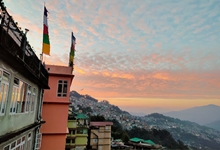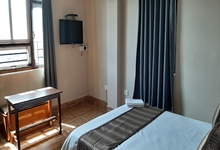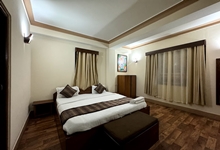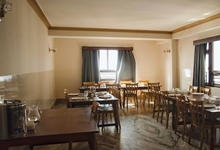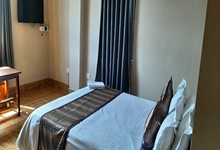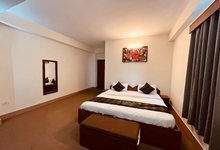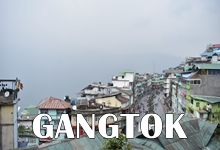
GANGTOK
Gangtok is a hill station and a town located in eastern part of the Indian state of Sikkim. Gangtok is also the capital of Sikkim and is considered as the center of tourism industry of Sikkim. The precise meaning of the Gangtok is unclear, but some believes that the word Gangtok is derived from Sikkimese name meaning ‘Hill Cut’ while other believe that the word is derived from a Nepali word meaning ‘Top of the Hill’. Gangtok is perched at an elevation of 1650 meter (5410 feet) and is mostly inhabited by Sikkimese ethnicities like the Bhutia, Lepchas and Nepali along with a few populations of the plainsmen who have settled at Gangtok. In 1975, after the integration with the union of India, Gangtok was made India’s 22nd state capital. Gangtok was an important point on the Indo – Tibet trade route via Nathu – La Pass until the border with Tibet was closed in 1962. However, the route was reopened for trade in 2006. From Gangtok the North Sikkim Highway reached the Tibetan border areas via Lachung and Lachen and the National Highway runs southeast to India. In 1894, Thutob Namgyal, the Sikkimese monarch under British rule, shifted the capital from Tumlong to Gangtok which increased the importance of Gangtok. Some of the densely forested regions of Gangtok are surrounded by temperate, deciduous forests of Poplar, Birch, Oak and Elm along with coniferous trees of the wet alpine zone. Orchids and Bamboos are common and found in abundant in Gangtok. As Gangtok is the main base of tourism in Sikkim, hence many native residents of Gangtok are directly or indirectly employed in tourism industry. Ecotourism has also emerged as an important economic activity in Gangtok which includes trekking, mountaineering, river rafting and other nature oriented activities. Most of the native inhabitants of Gangtok speak in Nepali and is also the most widely spoken language. Apart from that Hindi and English being the official language are also widely spoken and understood by almost every native of Gangtok.
Activities and attraction in and around Gangtok:
Gangtok being a town and the capital of Sikkim has many local attractions to offer and many activities for tourists.
- M.G. Marg: M.G. Marg (Mahatma Gandhi Marg) is the most popular place of Gangtok that has gained most of the tourist attraction. M.G. Marg is a pedestrian only road located in the downtown of Gangtok. M.G. Marg is something like a long stretch of open promenade and a mall area. M.G. Marg is full of shops, restaurants, bars where tourists can relax and enjoy. Apart from that sitting arrangements are made on the road for pedestrians.
- Rumtek Monastery: Rumtek Monastery also known as Dharma Chakra Center is a Gompa (Monastery) located in Gangtok. Rumtek Monastery was inaugurated in 1966 by the 16th Karmapa and is also a focal point for the sectarian tensions within the Karma Kagyu school of Tibetan Buddhism that characterize the 17th Karmapa controversy. Rumtek Monastery was originally built under the direction of Changchub Dorje, 12th Karmapa Lama in the mid-18th century. Rumtek Monastery is located 24 km from Gangtok and is currently the largest in Sikkim.
- Ganesh Tok: Ganesh Tok is a quaint little temple on a hilltop in Gangtok. The word ‘Tok’ means temple in local dialect and is dedicated to Lord Ganesh. Ganesh Tok is located 07 km from Gangtok and is set at an elevation of 6100 feet. On a clear day the periphery of Ganesh Tok offers panoramic view of Gangtok and with the view of the snow-capped Himalayan ranges. Ganesh Tok was constructed in 1953.
- Namgyal Institute of Tibetology: Namgyal Institute of Tibetology (NIT) is a Tibet museum in Gangtok named after the 11th Chogyal of Sikkim, Sir Tashi Namgyal. The foundation stone of the museum was laid by the 14th Dalai Lama on 10 February 1957 and was inaugurated on 01st October 1958 by the then Prime Minister of India Pandit Jawaharlal Nehru. The institute sits at Deorali which is less than 02 from Gangtok. The institute is a significant institution in the world for its extensive research on the Mahayana sect of Buddhism and Tibetan language and culture. The institute also operates a museum of Tibetan iconography and sacred art. At NIT tourists will get astounded by the vast collection of manuscripts, writings, and artifacts related to the decades-old tradition and culture of the Buddhist religion.
- Himalayan Zoological Park: Himalayan Zoological Park in Gangtok is sprawled on area of 205 hectare on the mountainous terrain. Himalayan Zoological Park is located in Bulbuley and is about 03 km from Gangtok. Himalayan Zoological Park is set at elevation of 1780 meter (5840 feet) and tenders a splendid view of Mt. Kanchenjunga and other peaks at the backdrop. Himalayan Zoological Park is the first zoo of Sikkim and houses a variety of fauna including Himalayan Monal Pheasant, Himalayan Red Panda, Snow Leopard Cat, Goral, Himalayan Palm Civet, Himalayan Black Bear, Crimson – Horned Pheasant and many others.
- Kabi Longstok: Kabi Longstock also spelled as Kabi Lungchok is historic site of significance located 17 km away from Gangtok. Kabi Longstok is the place where ‘The Treaty of Blood Brotherhood’ was ceremonially signed between the Lepchas (the ethnic tribal of Sikkim) and Bhutias (the immigrants from southern Bhot who settled down in Sikkim from 14th century onwards). This place is located in dense forest area of North Sikkim Highway near Phodong and is home to several species of birds and butterflies.
- Seven Sisters Waterfall: Seven Sister Falls is located around 32 km away from Gangtok on the National Highway towards North Sikkim. This picturesque waterfall is an ideal spot for tourists and landscape photographers where they can click some awesome shots. From Gangtok on the way to Lachung this waterfall is a nice stopover.
- Flower Exhibition Center: Flower Exhibition Center in Gangtok is a place where one can witness wide species of flowers under one roof. Located below the Ridge Park a little walk down from the M.G. Marg. This exhibition center exhibits several species of Orchids and Rhododendrons throughout the year. One of the popular attractions of this exhibition center is the Annual Flower show which conducts in the month of April – May. In this flower show hundreds of flower species, including Gentians, Celosia, Azaleas, Hydrangeas, Roses, Rhododendrons, Tulips, Liliums, Anthuriums, Poppies and Orchids are put on display.
- Do Drul Chorten: Do – Drul Chorten is a Buddhist Stupa in Gangtok built by Trulshik Rinpoche, head of the Nyingma order of Tibetan Buddhism in 1945. The stupa is enclosed by cluster of 108 prayer wheels with sacred texts carved on them. D – Drul Chorten is in Deorali area which is an easy walk from the main town of Gangtok. Several important sacred Kangyur manuscripts and relics associated with Dorje Phurba are carefully preserved inside it.
- Saramsa Garden: Saramsa Garden also known as Ipecac Garden is a public garden located close to Ranipool in Pakyong district. Saramsa Garden is located at a distance of 14 km from Gangtok and was established in 1922. This garden is dedicated as an Orchidarium and a recreational garden for picnickers. Saramsa Garden is located between the hill slopes of Gangtok and Pakyong on NH 717A.
- Hanuman Tok: Hanuman Tok is a Hindu temple dedicated to Lord Hanuman located on the upper reaches of Gangtok. This temple is located at a distance of 11 km from Gangtok and was established in the year 1968. Hanuman Tok is set at an altitude of 2194 meter (7200 feet) offers magnificent view of the mountain ranges along the horizon. This temple is maintained by resident units of the Indian Army and devotees come on large numbers to offer their prayers to the lord.
- Paragliding: Paragliding is an adventurous sport and one should try it out at Gangtok. Tourists are advised to try Paragliding on a clear day. The ideal time to try Paragliding in Gangtok is March to June and September to November. During Paragliding tourists can enjoy the breath-taking ariel view of Gangtok soaring high above the gorgeous valleys.
- Tashi View Point: Tashi View Point is located 08 km away from Gangtok on Noth Sikkim Highway near Pangthang. On a clear day Tashi View Point offers stunning view of the snow-capped Himalayan ranges of Mt. Kanchenjunga along with distant villages of North Sikkim. The tourism department of Sikkim has constructed a resting place, a park and a cafeteria for tourists at Tashi View Point.
- Tsuklakhang Palace: Tsuklakhang Palace or Tsuklakhang Royal Chapel and Monastery is a Buddhist palatial monastery in Gangtok. Tsukhalang Palace which served as a location for coronation, marriages and victory ceremonies among the Sikkimese royalty. Tsuklakhang is built in traditional Tibetan architectural style.
- Banjhakri Falls: Banjhakri Falls and Energy Park is a recreation center and tourist attraction near Gangtok. The word Banjhakri translates into ‘Ban – Forest’ and ‘Jhakri – Healer’. Banjhakri Falls is located at Swastik about 07 km from Gangtok on NH 31 towards North Sikkim. The cascade is about 30 metres (98 feet) high. Banjhakri is a must visit tourist attraction at Gangtok.
- Ranka Monastery: Ranka Monastery also known as Pal Karma Zurmang Shedup Chokhor Ling Lingdum Monastery which follows Zurmang Kagyud lineage of Buddhism is situated at a distance of 16 km from Gangtok. Ranka Monastery at Gangtok is spread over vast area (21 acres) and is the most magnificent monastery in the region. The monastery is surrounded by lush greenery and high rise mountains all around with a stream called Re Khola also flows nearby.
- Enchey Monastery: Enchey Monastery is situated on a beautiful hilltop near Gangtok TV Tower is a magnificent Nyingmapa Monastery of Enchey Sangag Rabtenling. Enchey Monastery is about 200 years old and is located 03 km northeast of Gangtok. Enchey Monastery belongs to the Nyingma order of Vajrayana Buddhism. The literal meaning of ‘Enchey Monastery’ is ‘The Solitary Temple’. Every year in the month of January vibrant and colourful ‘Chaam’ or ‘Religious Masked Dance’ is held here. Enchey Monastery is located on Gangtok – Nathula road from the northeast of the main market place in Gangtok.
- Gangtok Ropeway: Nestled in the heart of Gangtok, the ‘Ropeway’ or ‘Cable Car’ offers a captivating journey through the skies. From Gangtok Ropeway one can have a 360 degree view of the natural scenic landscapes of Gangtok along with snow-capped mountain ranges. Gangtok Ropeway is one of the most memorable and fascinating activity at Gangtok. The lowest boarding point of Gangtok Ropeway is in Deorali near Namgyal Institute of Tibetology and is 02 km from Gangtok town. Gangtok Ropeway is about 01 km in length and goes from Deorali to Tashiling Secretariat (via Sikkim Legislative Assembly).
- Mountain Biking: Mountain Biking at Gangtok is one of the most adventurous and fascinating activity to try at Gangtok. As these mountain bikes passes or ride through the rugged terrain of Gangtok. For adventure bend of mind mountain biking at Gangtok enables enthusiasts to travel through the well maintained streets of Gangtok towards gravelly trails in a tranquil setting with a view of the shifting scenery to take in the surreal Himalayan splendour.
Some of the best mountain biking trails in Gangtok are.
- Gangtok – Ranka – Martam.
- Gangtok- Phodong- Rangrang- Dikchu Makha- Sirwani- Temi.
- Gangtok- Rumtek- Sang- Sirwani- Temi- Namchi- Namthang- Rangpo.
- Gangtok- Rumtek- Sangh- Sirwani- Temi- Namchi- Jorethang- Melli.
- Gangtok- Rumtek- Sang- Sirwani- Temi- Damthang- Rabong- Kewzing- Tashiding- Yusum- Pelling- Dentam- Rinchenpong- Soreng- Sombaria- Jorthang- Namchi- Rangpo.
- Authentic Local Cuisines: While at Gangtok tourists are advised to try out some of the authentic local cuisines of Gangtok and its surrounding places. Some of these popular local cuisines available at Gangtok are Momo, Thukpa, Noodles, Thenthuk, Fakthu, Gyathuk and Wonton. Apart from these some traditional Sikkimese cuisines available at Gangtok are Shah – Phaley, Gack – Ko Soup and Chhang (a local millet beer served in bamboo tankards).
- Phodong Monastery: Phodong Monastery is a Buddhist monastery in Gangtok located at a distance of 28 km away. Phodong Monastery was built in the early 18th century but an older monastery had pre-existed the current one. Phodong Monastery belongs to the Karma Kagyu sect of Tibetan Buddhism. Phodong Monastery is quite popular among tourists due to its captivating murals, beautiful paintings and intriguing fresco paintings. Chaam Dance festival is also held at Phodong Monastery.
- Bakthang Waterfall: Bakthang Waterfall is a popular tourist spot situated on NH 31A and serves as the main water source for Gangtok. The name Bakthang is a combination of two different Sikkimese words ‘Bak – Forest and Thang – Meadow’. Bakthang Waterfall originates from River Ratey Chu. Bakthang Waterfall is located 04 km from Gangtok town and is an ideal spot for landscape photographers. Few shops and Cafes are set up near Bakthang where tourists can sit and relax. Adventure enthusiasts can also try rappelling down the cliff on a prefixed rope which is organized by the local tourism committee of the area.
- Fambong Lho wildlife Sanctuary: Fambong Lho Wildlife Sanctuary is a 52 sq. km large wildlife sanctuary in Gangtok. Fambong Lho Wildlife Sanctuary is located 20 km west of Gangtok above the road between Singtam and Dikchu. The average elevation of this wildlife sanctuary starts from 1524 meters (5000 feet) and the highest peak Tinjurey, a triangular hilltop is at 2130 meters (6989 feet). The name Fambong Lho derives its name from a Lepcha word ‘Hambomloh’ referred to the wild local Avocado trees. The sanctuary is home to wildlife species like Himalayan Black Bear, Red Panda, Civet Cat (including a rare Civet called the Binturong or Bear-Cat) and many varieties of birds and butterflies. It is a great place to see several species of Laughing Thrush including the Red – Faced Liocichla. The Sanctuary also has several rare species of flora including wild Orchids and Rhododendrons.
- Chogyal Palace: Chogyal Palace at Gangtok is also a popular tourist attraction in Gangtok. Chogyal Palace belongs to the Namgyal dynasty. The Chogyal Palace has an important historical significance because it played a crucial role of Sikkim merging with India in 1975.
- The Deer Park: The Deer Park in Gangtok was established in 1950 and is a natural habitat of Musk Deer and Himalayan Spotted Deer. The Deer Park also offers splendid view of the surrounding mountains and natural landscapes. The Deer Park is set on a ridge on the slide of the New Secretariat Building and has few trails so that visitors can witness these Deer in their natural habitat. Apart from Deer other wild animals Red Panda, Himalayan Bear and few other species are also seen in protected enclosures.
- Deorali Orchid Sanctuary: Deorali Orchid Sanctuary at Gangtok is located adjacent to Namgyal Institute of Tibetology in Gangtok. This orchid Sanctuary is home to about 250 species of Orchids from among 450 species of orchids known to exist in the world. Apart from Orchids about 40 species of Rhododendrons are also found here.
Popular tour from Gangtok:
Tourism in Gangtok is not only bounds within the above mentioned attractions and activities. Apart from those Gangtok also offers popular and known tours to explore. Two most popular tours from Gangtok are detailed below. Tourists are informed that for the below stated places one need to obtain required permits from Gangtok (Sikkim Tourism Department).
- Tsomgo Lake: Tsomgo Lake also known as Tsongmo Lake or Changu Lake is a popular day excursion from Gangtok. Tsomgo (Changu) Lake is a glacial lake in the eastern part of Sikkim located at a distance of 40 km from Gangtok. Tsomgo (Changu) Lake is perched at an altitude of 3753 meter (12.313 feet). Tsomgo (Changu) Lake is an oval shaped lake with a maximum length of 836 meters (2743 feet) and a maximum width of 427 meters (1401 feet). Tsomgo (Changu) Lake is located on Gangtok – Nathula Highway. Near Tsomgo (Changu) lake tourists can indulge in joy rides on Yak and Mules. There is a temple of Lord Shiva on the banks of Tsomgo Lake.
- New Baba Mandir: New Baba Mandir is a three room structure dedicated to Baba Harbajan Singh. New Baba Mandir is set at an altitude of 13123 feet and is located about 52 km from Gangtok on Nathula – Jelep La pass. Usually New Baba Mandir trip is included with Tsomgo Lake and Nathula Pass tour. This New Baba Mandir has become a pilgrimage center in Sikkim.
- Nathula Pass: Nathula Pass is a high mountain pass in the Dongkya Range of the Himalayas in the Indo – Tibet border set at an altitude of 14450 feet. The word ‘Nathu means listening ears and La means pass’. Nathula Pass is located at a distance of 54 km away from Gangtok.
- Lachen: Lachen is one of the most popular towns in North Sikkim tour from Gangtok. The word Lachen means ‘Big Pass’. Lachen is perched at an altitude of 8838 feet and located at a distance of 107 km from Gangtok. Lachen is also forms the base to Chopta Valley and Gurudongmar Lake tour.
- Chopta Valley: Chopta Valley is a popular hotspot in North Sikkim set at an altitude of 13200 feet and located at a distance of 160 km away from Gangtok via Lachen. Chopta Valley has a barren and austere landscape but in the month of spring the valley blooms with colours of Primulas and Rhododendrons. Chopta Valley also offers grand sweeping mountain vistas.
- Gurudongmar: Gurudongmar Lake is one of the highest altitude lakes in India set at an altitude of 5425 meter (17800 feet). Gurudongmar Lake is considered very sacred among Buddhists and Hindus. Gurudongmar Lake is located at a distance of 190 km from Gangtok via Lachen and Thangu. Gurudongmar Lake is nestled amidst snow-covered mountain ranges and the periphery of this lake is home to Mountain Yaks and Blue Sheep.
- Lachung: Lachung is another hill station of Mangan district of North Sikkim and a popular stopover in North Sikkim tour. Lachung is set at an altitude of 2900 meter (9600 feet) and located at a distance of 120 km away from Gangtok. The word Lachung means ‘Small Pass’. Lachung forms the base of Yumthang Valley along with Katao and Yumesamdang.
- Yumthang Valley: Yumthang Valley also known as ‘Sikkim Valley of Flowers’ is a natural sanctuary with river, hot springs, yaks and grazing pasture of Rolling Meadows surrounded by the snow-capped mountains ranges. Yumthang Valley is set at an altitude of 3564 meter (11693 feet) and located at a distance of 150 km from Gangtok. During winter season Yumthang Valley remains covered with thick blankets of snow. Yumthang Valley covers an area of 34 sq. km and is home to more than 21 species of Rhododendrons.
How to reach:
By Air: There are two different airports from where Gangtok can be approached. The nearest airport to Gangtok is Pakyong Airport located at a distance of 30 km away. The second nearest airport to Gangtok is Bagdogra Airport located at a distance of 124.5 km away. Hired vehicles are available from both the airports to reach Gangtok. Bagdogra Airport is well connected by regular flight service with Kolkata, Guwahati, Mumbai, Chennai and Delhi compare to Pakyong Airport.
By Train: The nearest rail head to Gangtok is New Jalpaiguri Railway station (NJP) located at a distance of 117 km via NH 10. NJP railway station is well connected by regular railway networks with Kolkata and other major cities of India. From NJP railway station buses (run by Sikkim Transport department) are available to reach Gangtok. Apart from that Taxis and hired vehicles also ply between NJP to Gangtok. It takes about 04 to 4.5 hours to reach Gangtok from NJP.
By Road: Gangtok is well connected by good motor-able roads with Siliguri (114 km), Darjeeling (100 km), Kalimpong (76 km), Rongpo (40 km), Pelling (120 km), Ravangla (68 km), Namchi (80 km) and others. From all these places tourists will get vehicles on hire to reach Gangtok. For local sightseeing in Gangtok tourists will get taxis and big vehicles on hire from the designated stand at Gangtok. And for North Sikkim Tour from Gangtok tourists need to hired vehicles either on reserved or on shared basis.
Best time to visit:
Gangtok being a popular tourist destination can be visited throughout the year. During spring (March to April) the climate remains pleasant and varieties of colourful flowers are seen in full bloom. Winter (October to February) the climate gradually becomes chilly but it is best to roam in and around Gangtok. The skies also remain clear. Summer (May to June) is ideal to escape the scorching heat of the plains and is also ideal for North Sikkim tour from Gangtok. Monsoon (July to September) has a different charm in itself, but tourists should avoid this time due to messy road condition.
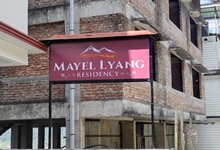

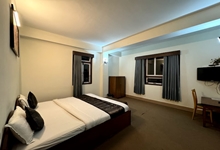

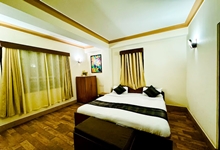

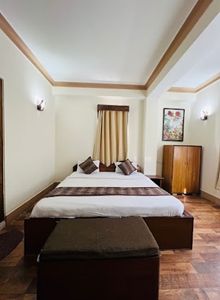

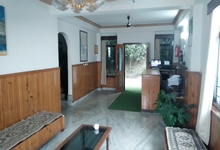


MAYEL LYANG RESIDENCY
